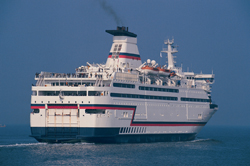Enhancing ship safety through better design
Backed by EU funding, the 'Goal based damage stability' (GOALDS) project set a number of objectives aimed at enhancing the current approach to safety for passenger ships, particularly mega cruise ships. The innovation in and rapid rate of shipbuilding are creating unprecedented challenges that call for a new paradigm: one that treats safety as a design objective. The 'prescription' approach whereby ships are understood to be safe based on their compliance with rules and constraints is discarded; it does not ensure a reliable minimum level of required survivability, and as such, this is where changes need to be introduced. A key GOALDS objective was the development of an integrated formulation for assessing the survivability of passenger ships in damaged condition. To this end, project partners developed an accidents database, expanding the information currently available for analyses on other databases. Statistical analyses on the gathered data enabled team members to highlight shortcomings of existing formulations and to develop new ones. The GOALDS team investigated, for the first time, the mechanism of flooding and subsequent ship loss resulting from bottom damages. One of their conclusions was that grounding damage should not constitute a significant threat to the survivability of a well-designed and properly operated passenger vessel, in calm water and in waves. Additionally, they advanced new software for damage stability calculations based on their development of a new survival factor. The new formulation was programmed and tested by end users, with all parameters and criteria thoroughly discussed among the consortium members. This was done with a view to arriving at precise definitions of the practical use of the formulation. Other project efforts resulted in progress in the establishment of a risk-based damage stability requirement and innovative ship concept designs based on the requirement. Project results were assessed for the submission of relevant reports to the International Maritime Organization (IMO). Developments and progress realised during the GOALDS project offer a basis for improving on current damaged stability regulations, and should lead to an enhanced level of safety for ship passengers. The outcomes of such EU-funded projects contribute to passenger safety and enhance the visibility and importance of the EU in international maritime rules-making bodies such as the IMO.



